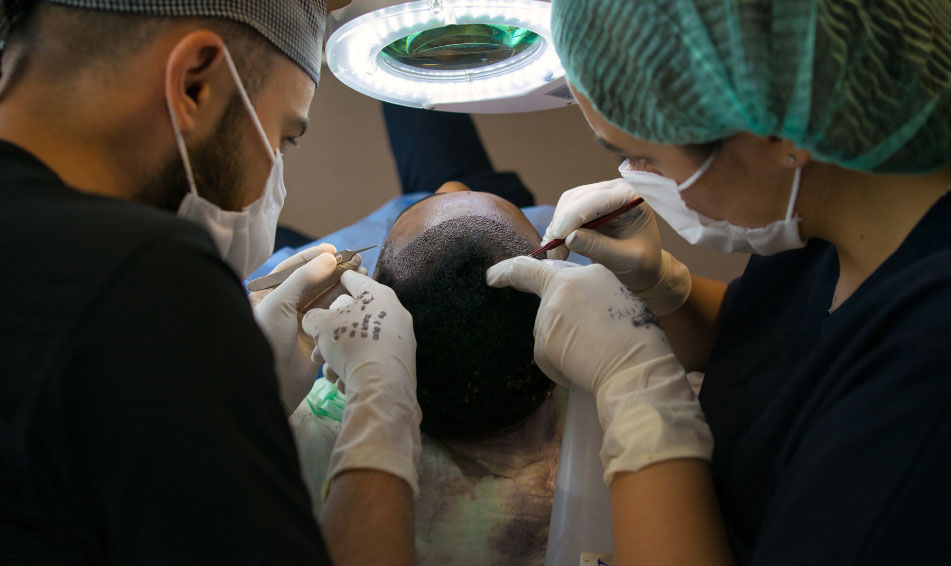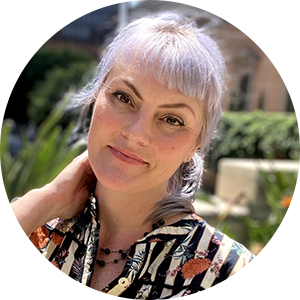Hair Restoration Deceptions
If you're exploring options for hair restoration, this article is a must-read. Delve into Dr. Naina's expertise on the myths around hair transplants and stem cell treatments. Plus, discover the AlmaTED device—an innovative, non-invasive, and more budget-friendly approach designed to address hair thinning and loss.
Beyond Myths and Misconceptions
Hair restoration technology is a beacon of hope for many grappling with hair loss. However, the path to reclaiming a full head of hair is often shrouded in misconceptions and myths. Dr. Naina, a visionary in functional medicine and aesthetics, sheds light on these misunderstandings, guiding us toward more effective and sustainable solutions.
Hair Transplants: A Partial Answer

Hair transplantation involves relocating hair from one area of the scalp to another and using various methods; grafting is the most prevalent method. The notion that hair transplants offer a one-size-fits-all solution is a common misconception. While transplants can provide remarkable results for some, they're not the definitive answer to hair loss. "Many think a hair transplant will solve all their problems," Dr. Naina explains. "However, this process doesn't address the underlying causes of hair loss.” Once you have a hair transplant, you can continue to lose hair if you don’t address the underlying causes.
Eight specific conditions should disqualify individuals as suitable candidates for hair transplantation. These include 1) diffuse unpatterned alopecia (DUPA), 2) cicatricial alopecia (CA), 3) those experiencing ongoing hair loss, 4) individuals with minimal hair loss, 5) very young patients, 6) those with unrealistic expectations, 7) individuals diagnosed with psychological conditions such as body dysmorphic disorder (BDD) or trichotillomania, and 8) those who are not in good health (https://www.ncbi.nlm.nih.gov/pmc/articles/PMC8719975/).
Additionally, some individuals might not be ideal candidates but could still undergo hair transplantation with the understanding that the results may be limited (https://www.ncbi.nlm.nih.gov/pmc/articles/PMC8719975/). To determine if you are one of the patients who should not have transplants, or is a poor candidate, contact a functional medicine doctor, a trichologist (a hair and scalp doctor), or a dermatologist.
Hair transplants are one of the most expensive treatments, if not the most costly. According to a study by Medihair, the average cost of a hair transplant in the US is $13,610 (https://medihair.com/en/hair-transplant-statistics/). Additionally, it's common for the actual surgeon not to perform the implants—expect an additional fee for this specialized service rather than them spending a few minutes to review your files before one of their medical professional team members performs the transplant. The cost, risks, and pain make this the last-resort option.
The Stem Cell Conundrum
Media pundits hail stem cell treatments as a groundbreaking solution for numerous health conditions, including hair loss. However, Dr. Naina urges caution, highlighting the potential risks of immunogenicity — the possibility of your body rejecting these cells. "You don't know where those stem cells came from," she notes, emphasizing the complications that can arise from using cells from other individuals. Moreover, if the initial imbalances causing hair loss aren't addressed, the problem will likely persist.
The cost of experimental stem cell treatments for hair restoration varies, typically falling between $3,000 and $10,000. The severity of the hair loss condition is a significant factor in the final price (https://www.healthline.com/health/stem-cell-hair-transplant#cost).
The AlmaTED Advantage
In contrast to these costly and often invasive treatments, Dr. Naina introduces the AlmaTED device as a groundbreaking, cost-effective solution. Unlike hair transplants and stem cell therapies, Alma TED targets the early stages of hair thinning and loss, rejuvenating weakened hair follicles without surgical intervention. The cost is usually $1000 per treatment. At least three treatments are suggested, one month apart each.
Nutrigenomics: One Path to Sustainable Hair Health
Dr. Naina also emphasizes the significance of addressing internal imbalances contributing to hair loss, such as nutritional deficiencies and genetic predispositions. Through nutrigenomics, the study of how nutrients affect your genes, individuals can tailor their diet to support hair growth and overall wellness. "If there's something else going on, like nutrient-genomic imbalances, we need to fix that," Dr. Naina advises, advocating for a holistic approach to hair restoration.
Your Path to Lush Locks: Embracing the Future of Hair Restoration with Confidence
By deepening our grasp on the true nature of hair restoration, we edge closer to nurturing self-confidence. As you journey through the realm of self-assurance, we’re here to help you navigate the myriad of treatment options with wisdom. Dr. Naina's pearls of wisdom underscore the reality that there's no one-size-fits-all cure for hair loss. Yet, pioneering approaches like AlmaTED, married with a holistic wellness mindset, hold the key to a hopeful horizon. This philosophy resonates deeply with Arbelola's mission of fostering artful beauty and mindful living, thus empowering us to flourish and radiate beauty from the inside out.
We're eager to hear about your experiences! Have you explored similar paths in your quest for beauty and wellness? Join the conversation in celebrating a life of artful beauty and conscious living.





